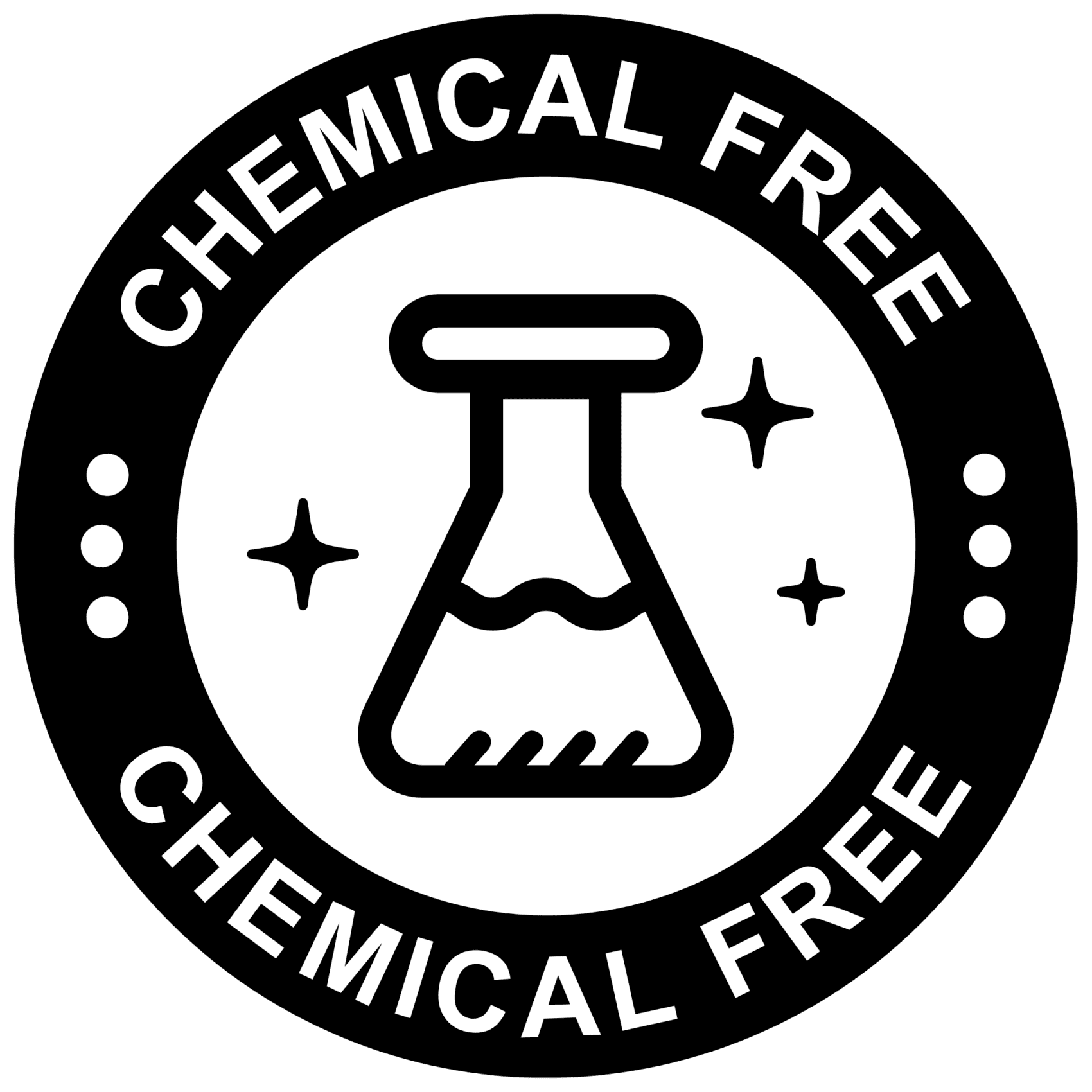Introduction to Carcinogenic Chemical Exposure in Pregnant Women
Overview of Carcinogenic Chemicals in Daily Life
Every day, we are surrounded by a myriad of chemicals that make modern life possible. From the non-stick pans we cook with to the cosmetics we apply and the packaging that keeps our food fresh, chemicals play a crucial role in our daily routines. However, among these substances, there are hidden carcinogens—agents capable of causing cancer. For pregnant women, the concern is not only for their own health but also for the developing fetus, which can be particularly vulnerable to these toxic exposures.
Potential Impact on Child Development and Pregnant Women
The impact of carcinogenic chemicals on child development and pregnant women can be profound. During pregnancy, the placenta acts as a barrier to protect the developing fetus, but it is not impervious to all substances. Certain chemicals, such as per- and polyfluoroalkyl substances (PFAS), have been shown to cross this barrier, potentially leading to adverse health outcomes. These outcomes can range from restricted fetal growth to impaired immune responses and may even increase the risk of neurologic and behavioral disorders. The long-term implications of such exposure can extend into childhood and beyond, making the prenatal period a critical window for minimizing contact with carcinogens.

Finally Peace of Mind! NO more worries, no more hassle in checking the labels of creams and lotions.
I found skin care and beauty without chemicals. Chemicals in skin care are hormone disruptors and could turn out very bad for me. I need to stay away from them.
Safe ingredients, no doubts, no compromises and no false promises.
Disproportionate Risks for Women of Color
Women of color often face disproportionate risks when it comes to exposure to carcinogenic chemicals. Socioeconomic factors, environmental conditions, and occupational hazards contribute to this increased vulnerability. For instance, women of color are more likely to reside in areas with higher levels of pollution or work in industries where they come into contact with harmful substances. This disparity not only highlights the need for targeted public health interventions but also calls for a broader examination of the systemic issues that perpetuate such inequalities.
In conclusion, the hidden carcinogenic chemicals in our daily lives pose significant risks to pregnant women and their unborn children, with women of color facing even greater challenges. As we continue to uncover the extent of these exposures, it is imperative that we take steps to protect the most vulnerable among us and strive for a safer, healthier environment for all.

Do you have the most commonly used but toxic, disease bringing chemicals in your skin care? Many chemicals in skincare are hormone disruptors and make menopause symptoms worse.
Find out more…
Understanding Carcinogens: Melamine, Cyanuric Acid, and Aromatic Amines
Sources and Uses of Melamine in Consumer Products
Melamine is a high-production chemical, with over 100 million pounds produced annually in the U.S. alone. It is commonly found in a variety of consumer products due to its durability and heat-resistant properties. Melamine is used in the manufacture of dishware, including plates and cups, which are popular for their lightweight and shatterproof qualities. It is also present in plastics, which are ubiquitous in household items, flooring materials, kitchen counters, and even in certain pesticides. Despite its widespread use, melamine was recognized as a kidney toxicant after incidents of baby formula and pet food poisoning, highlighting the potential risks associated with its exposure.
Cyanuric Acid: Applications and Health Implications
Cyanuric acid, a major byproduct of melamine, is another chemical produced in large quantities. Its applications include use as a disinfectant and plastic stabilizer. It is also a common cleaning solvent in swimming pools, where it helps to stabilize chlorine and extend its effectiveness. However, the health implications of cyanuric acid are concerning, especially when exposure occurs in conjunction with melamine. Studies have shown that the combined toxicity of these chemicals can be more severe than either one alone, posing a significant risk to human health, particularly for pregnant women and their developing fetuses.
Aromatic Amines: Presence in Everyday Items and Risks
Aromatic amines are a group of chemicals found in a wide array of everyday items, many of which are associated with colorants and pigments. They are present in hair dye, mascara, tattoo ink, and paint. Beyond cosmetics and art supplies, aromatic amines are also byproducts of tobacco smoke and diesel exhaust, making them nearly impossible to avoid in urban environments. The risks associated with exposure to aromatic amines are significant, as they are known carcinogens and have been linked to developmental toxicity. Pregnant women, in particular, need to be cautious of their exposure to these chemicals, as they can potentially harm child development and increase the risk of cancer.
Given the prevalence of these chemicals in daily life and their potential impact on health, it is crucial for pregnant women to be aware of the sources and risks associated with melamine, cyanuric acid, and aromatic amines. Regulatory action and further research are needed to better understand the full extent of these risks and to develop strategies for reducing exposure.

Feeling You Have a Right to Safe Beauty & Fem Care?
If so, it may be time for a change. It starts with knowledge. We have a few suggestions in our new guides.
Routes of Exposure and Health Risks for Pregnant Women
Inhalation, Ingestion, and Dermal Contact
Pregnant women are exposed to a variety of carcinogenic chemicals through multiple routes including inhalation, ingestion, and dermal contact. Inhalation exposure occurs when volatile chemicals are released into the air from industrial processes, household cleaning products, or outdoor pollution. Ingestion exposure is common through the consumption of contaminated food and water, where chemicals such as pesticides, heavy metals, and plasticizers can accumulate. Dermal exposure happens when chemicals come into contact with the skin, often through personal care products, cosmetics, or occupational hazards. Each route of exposure can contribute to the body’s cumulative chemical burden, with potential implications for both maternal health and fetal development.
Synergistic Toxicity of Combined Chemical Exposure
The simultaneous exposure to multiple chemicals can lead to synergistic toxicity, where the combined effect is greater than the sum of individual effects. Pregnant women often encounter a “chemical cocktail” from various sources, and the interactions between these chemicals can exacerbate health risks. For instance, the concurrent exposure to melamine and cyanuric acid has been shown to form insoluble crystals in the kidneys, leading to renal toxicity. The complexity of these interactions makes it challenging to predict health outcomes and underscores the importance of considering combined exposures in risk assessments.
Historical Incidents: Case Studies of Melamine Toxicity
Historical incidents provide insight into the dangers of hidden carcinogens. One notable case is the melamine contamination of infant formula in 2008, which led to widespread kidney damage in infants. Melamine, often combined with cyanuric acid, was added to milk products to artificially inflate protein content measurements. This incident highlighted the vulnerability of pregnant women and developing fetuses to toxic chemical exposures and the need for stringent regulatory oversight to prevent such public health crises.
Research Findings on Carcinogenic Exposure in Pregnant Women
Methodology of Recent Studies
Recent studies investigating the exposure of pregnant women to carcinogenic chemicals have employed a variety of methodologies to assess the presence and potential impact of these substances. A notable study by UC San Francisco and Johns Hopkins Bloomberg School of Public Health utilized a cross-sectional design, analyzing urine samples from a diverse cohort of 171 pregnant women. These participants were part of the National Institutes of Health’s Environmental influences on Child Health Outcomes (ECHO) Program, with data collection spanning from 2008 to 2020. The study aimed to quantify the levels of carcinogenic chemicals such as melamine, cyanuric acid, and aromatic amines, and to understand their distribution across different demographics.
Chemical Trace Analysis in Urine Samples
The core of the research centered on the trace analysis of 45 chemicals associated with cancer and other health risks. Urine samples were meticulously tested for the presence of these substances, providing a biomarker of exposure. The detection of chemicals like melamine and cyanuric acid in nearly all participants underscored the pervasive nature of these compounds. The methodology was robust, employing advanced analytical techniques to ensure accurate quantification and to facilitate a comprehensive assessment of exposure levels.
Demographics and Diversity of Study Participants
The demographic composition of the study participants was reflective of the broader U.S. population. Approximately one-third (34%) were white, 40% were Latina, 20% were Black, 4% were Asian, and the remaining 3% represented other or multiple racial groups. This diversity was crucial for understanding the differential exposure levels and risks among various ethnicities. The study’s findings highlighted a concerning trend: women of color, particularly Black and Hispanic women, exhibited higher levels of certain carcinogenic chemicals compared to their white counterparts. This disparity underscores the need for targeted public health interventions and policies to address environmental inequities.
Do you know the three main ways that your body gets in touch with harmful chemicals with everyday products? Knowledge is Power!
The Ultimate Detox Guide will tell you how to lower your exposure to harmful chemicals!

The Racial Disparity in Chemical Exposure
Comparative Analysis of Chemical Levels in Different Ethnic Groups
Recent research has highlighted significant disparities in the levels of carcinogenic chemicals found in pregnant women across different ethnic groups. A study analyzing urine samples from a diverse group of 171 pregnant women revealed that women of color, particularly Black and Hispanic women, had higher levels of certain chemicals, such as 3,4-dichloroaniline, compared to their white counterparts. The levels of this chemical, used in the production of dyes and pesticides, were more than 100% higher in these groups. This finding is consistent with other studies that have shown that women of color are more likely to be exposed to a variety of environmental pollutants, including those with carcinogenic properties.
Socioeconomic and Environmental Factors Contributing to Disparities
The disparities in chemical exposure among pregnant women of different ethnic backgrounds can be attributed to a range of socioeconomic and environmental factors. Women of color are more likely to live in areas with higher pollution levels due to industrial activities, inadequate waste disposal, and proximity to contaminated sites. Additionally, socioeconomic factors such as lower income levels, limited access to healthcare, and occupational exposures contribute to the increased risk. For instance, women of color are more likely to work in jobs with higher exposure to harmful chemicals and have less access to protective measures or health information.
Implications for Public Health Policy and Regulation
The evidence of racial disparities in chemical exposure has significant implications for public health policy and regulation. It underscores the need for targeted interventions to reduce exposure risks in vulnerable populations, including stricter regulation of industrial pollutants, improved monitoring of environmental hazards in at-risk communities, and better access to healthcare services. Public health policies must also address the underlying socioeconomic inequalities that contribute to these disparities. Regulatory agencies should consider these findings when setting safety standards and thresholds for chemical exposure to ensure they are protective of all population groups, especially those most at risk.
In conclusion, the racial disparity in chemical exposure among pregnant women is a public health concern that requires immediate attention. The higher levels of carcinogenic chemicals found in women of color highlight the need for a comprehensive approach that addresses both the environmental and socioeconomic factors contributing to these disparities. By implementing targeted public health policies and regulations, we can work towards reducing the risk of chemical exposure and its potential impact on the health of future generations.

Doubting chemicals in skincare and femcare? Well done! Choose chemical-free products whenever possible.
Expert Opinions and Regulatory Perspectives
Academic Insights on Developmental Toxicity and Cancer Links
Academic research has increasingly focused on the developmental toxicity and potential cancer links associated with exposure to carcinogenic chemicals during pregnancy. Studies have highlighted the vulnerability of the developing fetus to even low levels of toxicants, which can lead to altered fetal development and long-term health consequences. Experts in the field of environmental health stress the importance of understanding the critical windows of exposure during gestation, where specific organs and systems are most susceptible to damage. The consensus among researchers is that there is a need for more comprehensive studies to fully elucidate the mechanisms by which these chemicals exert their effects and to better inform public health interventions.
Calls for Regulatory Action and Monitoring
There is a growing call from the scientific community for regulatory bodies to take decisive action to protect pregnant women from hidden carcinogenic chemicals. Advocates urge for stricter regulations on the use of known carcinogens in consumer products and for the implementation of robust monitoring systems to track exposure levels. The need for updated and more stringent safety standards is emphasized, alongside the development of a precautionary principle approach to chemical management. This would entail taking preventive action in the face of uncertainty, erring on the side of caution to safeguard maternal and fetal health.
Challenges in Implementing Protective Measures
Implementing protective measures against carcinogenic chemical exposure during pregnancy presents several challenges. One major hurdle is the lack of comprehensive data on the prevalence and concentration of these chemicals in the environment and consumer products. Additionally, the complex nature of chemical exposure—often involving mixtures rather than single substances—complicates risk assessment and management. There is also the issue of balancing economic interests with public health concerns, which can delay regulatory action. Furthermore, disparities in exposure risk among different populations, particularly women of color and those from lower socioeconomic backgrounds, highlight the need for targeted interventions to address environmental justice.
In conclusion, while there is a clear recognition of the risks posed by hidden carcinogenic chemicals to pregnant women, translating this knowledge into effective regulatory policies and protective measures remains a complex task. Continued advocacy, research, and collaboration between academic experts, regulatory agencies, and public health officials are essential to advance the safety and well-being of pregnant women and their developing children.
By the way, something for you, a little gift!!!
I am just in the middle of publishing my book. It’s about How women can balance their hormones. One part is about food and diet, of course.
Follow this link and enter your email.
I will send you this part of the book for free once the book is published. It has many concrete, practical tips and recipes and will help you feel better during menopause or times of Big hormonal fluctuations.
Annette, Damiva Lead for Health & Wellness

Conclusion and Recommendations for Pregnant Women
Summary of Findings and Health Concerns
The comprehensive analysis of hidden carcinogenic chemicals to which pregnant women are exposed has revealed a complex landscape of risk factors. Our investigation has identified several chemicals, including melamine, cyanuric acid, and aromatic amines, that are present in everyday consumer products and can be inadvertently ingested or inhaled by pregnant women. These substances have been linked to potential developmental harm and increased cancer risk, emphasizing the need for heightened awareness and preventive measures.
Research has shown that prenatal exposure to environmental toxins can significantly affect the developmental biology of the fetus, leading to cognitive and behavioral phenotypes that may manifest later in life. The presence of these chemicals in common foods, beverages, and over-the-counter medications further complicates the task of safeguarding maternal and fetal health. Additionally, disparities in chemical exposure among different ethnic groups suggest that women of color, particularly those of lower socioeconomic status, may face disproportionate risks.
Practical Steps to Minimize Exposure
- Educate and Inform: Pregnant women should be provided with clear guidelines on the risks associated with certain foods, beverages, and medications. This includes information on how to identify and avoid products containing harmful chemicals.
- Dietary Adjustments: A balanced diet rich in nutrients and low in processed foods can help reduce the intake of hidden carcinogens. Pregnant women should be encouraged to consume organic produce and carefully sourced meats and fish.
- Product Selection: Choosing personal care and household products that are free from known harmful chemicals can significantly reduce exposure. Women should be advised to read labels and opt for products with fewer synthetic ingredients.
- Professional Consultation: Regular consultations with healthcare providers can help pregnant women make informed decisions about medication and supplement intake during pregnancy.

Finally Peace of Mind! NO more worries, no more hassle in checking the labels of creams and lotions.
I found skin care and beauty without chemicals. Chemicals in skin care are hormone disruptors and could turn out very bad for me. I need to stay away from them.
Safe ingredients, no doubts, no compromises and no false promises.
Future Directions for Research and Policy
Further research is essential to fully understand the impact of prenatal exposure to carcinogenic chemicals. Studies should focus on long-term outcomes for children exposed in utero and aim to identify all possible sources of exposure. Additionally, there is a need for more comprehensive demographic studies to address the racial and socioeconomic disparities in chemical exposure.
On the policy front, there is a pressing need for stricter regulations and monitoring of consumer products to ensure they are free from harmful chemicals. Public health policies should be revised to provide better protection for pregnant women and their developing fetuses. Regulatory agencies must also work towards eliminating racial and socioeconomic disparities in chemical exposure by ensuring equitable access to safe products and healthcare services.
In conclusion, while the risks associated with hidden carcinogenic chemicals are significant, they can be mitigated through education, informed choices, and policy reform. It is imperative that pregnant women receive the support and information they need to protect themselves and their unborn children from these hidden dangers.

















